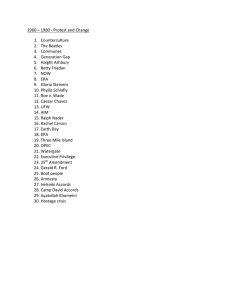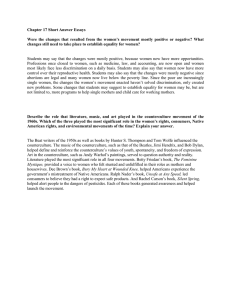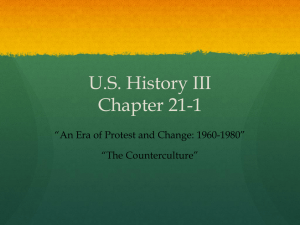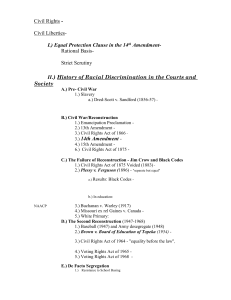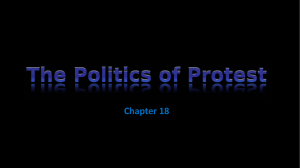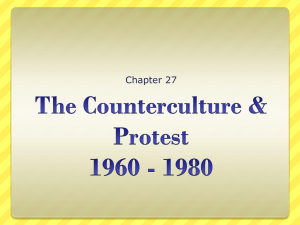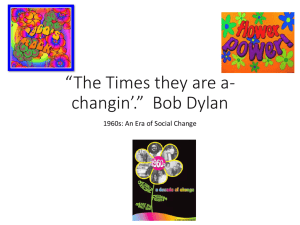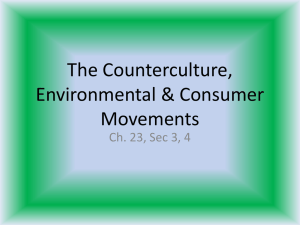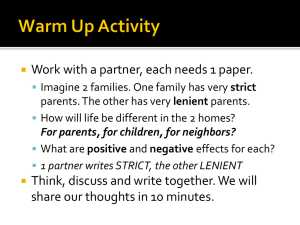Social Movements of the 60s & 70s
advertisement
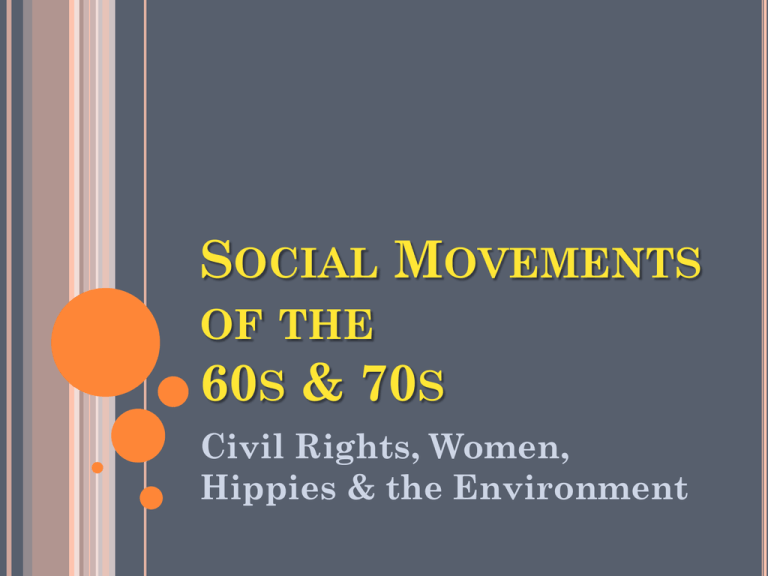
SOCIAL MOVEMENTS OF THE 60S & 70S Civil Rights, Women, Hippies & the Environment THE CIVIL RIGHTS MOVEMENT THE PLAYERS Supporters of NonViolent Methods Martin Luther King, Jr. (MLK) Supporters of ViolentMethods Southern Christian Leadership Conference (SCLC) Malcolm X Nation of Islam Black Panthers STOKLEY CARMICHAEL: African Americans should use their economic and political muscle to gain equality THE PUSH FOR VOTING RIGHTS SNCC, 1960 Student Non-Violent Coordinating Committee “Freedom Summer” 1,000 volunteers folld Mississippi to register African Americans to vote. SCLC, 1957 Southern Christian Leadership Conference “March in Selma” Pressured gov’t to enact a voting rights act. Heavily armed troopers attack marchers. VICTORIES Voting Rights Act, 1965 Ø more literacy tests 24th Amendment, 1964 Ø more poll taxes CIVIL RIGHTS ACT,1964 Banned segregation in public accommodations, employment AND public facilities LOSSES… April 4, 1968. In the wake of his murder Congress passed the Fair Housing Act, which banned discrimination in housing. WOMEN’S RIGHTS MOVEMENT Causes for the movement Feminism The theory of political, social & economic equality for men and women. Rights gained in the civil rights movement Discrimination against women Unsatisfying roles Workforce limitations & discrimination WOMEN’S MOVEMENT Proponents Betty Friedan Pres. of NOW “The Feminine Mystique” Gloria Steinem Ms. Magazine Opponents Phyllis Schlafly Conservative Political activists Denounced women’s lib as an “assualt on the family, on marriage, and on children. NOW: NATIONAL ORGANIZATION FOR WOMEN Established by Betty Friedan Sought to win equality for women Tried to get passage of ERA=Equal Rights Amendment Worked to protect a woman’s right to an abortion ROE V WADE Passed in 1973 Gave women the right to legal abortions THE ENVIRONMENTAL MOVEMENT April 22, 1970=1st “Earth Day” EPA formed=Environmental Protection Agency. Clean Air Act (1970) Clean Water Act (1973) Endangered Species Act (1973) Rachel Carson, Silent Spring, 1962 RACHEL CARSON & SILENT SPRING Published in 1962 Inspired much environmental activism Describes deadly impact of pesticides on wildlife Eventually compelled Congress to restrict use of pesticide DDT. COUNTERCULTURE OF THE 60S-70S Grew out of the beatnik movement Emphasis on freedom from materialism Influenced by civil rights movement Questioned traditional values HIPPIES… Non-Judeo –Christian spirituality Rock n’ Roll Peace, love, freedom Youth generation Open sexual relationships Recreational drug use COUNTERCULTURE Generation gap: Rebellion & misunderstanding between older & younger generations Communes: lived together Haight-Ashbury: Center of the counter-culture in district of San Francisco. Experimented with drugs Listened to Rock n’ Roll & speeches made by Timothy Leary Encouraged youths to ““tune in,” “turn on” to drugs and “drop out” of mainstream society.
